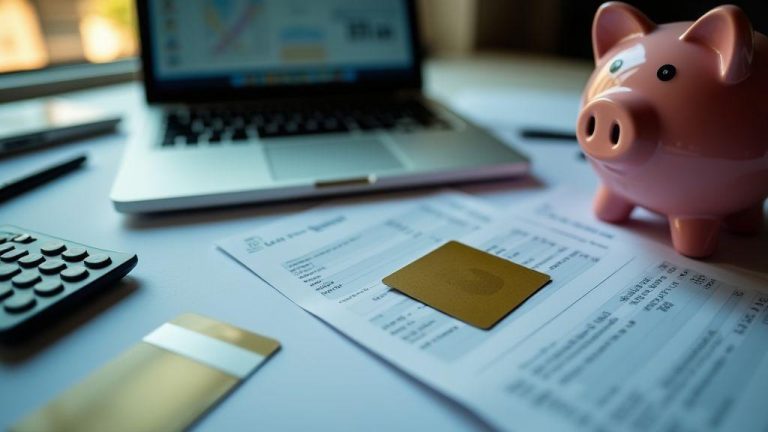Where you check lender licensing and customer reviews to verify lender legitimacy
You want to know if a lender is real before you hand over personal info or sign papers. Start with public regulator sites and big review platforms. Look up the lender on your state’s financial regulator or Department of Banking site, the Consumer Financial Protection Bureau complaint database, and the Better Business Bureau. Then cross-check ratings on Google Reviews, Trustpilot, and niche forums like Reddit’s personal finance threads. If a name shows up in a state database as licensed and has few or no enforcement actions, that’s a green flag. If it’s nowhere to be found, walk away.
Read customer reviews with an eyebrow raised. A single angry review doesn’t sink a lender; patterns do. Watch for repeated complaints about fees, surprise rollovers, or collectors showing up fast. Pay attention to how the lender replies to complaints. Honest companies reply, fix problems, and state policy plainly. Fake lenders often ignore questions or answer with canned lines that don’t address specifics.
Mix both sources. State records give you legal standing and disciplinary history. Reviews give you everyday experience — how the lender treats you after you sign. Cross-check a license number on the regulator site with the business name on reviews. Best practices for verifying lender legitimacy when applying for bad credit loans with customer reviews and regulatory checks will keep you from signing into a trap.
How you use bad credit lender reviews and review sentiment analysis for lenders
Read reviews like a detective. First, note common complaint themes: hidden fees, deadline traps, poor customer service, or inaccurate statements about rates. Count how many times each issue appears. If many reviews mention the same problem, that’s a clear warning. Also check dates — a spike in complaints over a short time often signals a recent bad change in policy or management.
Use simple sentiment checks: sort reviews into positive, neutral, and negative and watch for emotion words: scammed, lied, helped, fast, clear. Too many negative emotion words tied to the same issue mean trouble. For an extra layer, use free tools like spreadsheet word counts or a basic review-analyzing site to highlight repeating phrases. That quick scan saves you time and points you to lenders worth calling or avoiding.
How you run a state regulator database check to check lender licensing
Head to your state’s banking or finance regulator website and search the lender by exact legal name, DBA, or license number. Most sites let you pull up licensing status, license type, expiration date, and any disciplinary actions. If you see licensed and no recent actions, that helps. If the license is expired, suspended, or missing, treat that as a major red flag and don’t proceed without more proof.
Also check the Secretary of State business filings for the lender’s registration and the CFPB complaint database for patterns across states. Some lenders operate under different names in different states, so match addresses and EINs if you can. If the regulator shows enforcement actions, read the orders — they’ll tell you what the lender did wrong and whether it was a paperwork slip or something dangerous like illegal fees.
How you confirm lender contact and business address and detect fake customer reviews
Call the listed phone number, send an email, and compare the mailing address to the one on Secretary of State filings and Google Maps — real businesses usually have consistent, traceable info; fake ones have PO boxes, mismatched addresses, or virtually non-existent web domains. Check the website’s WHOIS data for domain age and ownership, reverse-image search reviewer photos, and scan review timestamps for clusters of similar language; if many reviews use the same phrasing or post within hours, they’re likely fake.
What documents you must prepare and how identity and document verification for lenders works
Lenders want to know who you are and that you can pay back the loan. Think of the process like a bouncer at a club: they check your ID, look at your history, and decide if you get in. For personal loans, that means identity checks (ID and Social Security), credit and fraud checks, and bank verification. If your credit is low, expect closer scrutiny. Lenders will pull credit reports, run background and fraud screens, and may ask for extra proof of income or residency.
Bring both originals and clear digital copies. Lenders usually ask for a government photo ID, proof of Social Security number, recent pay stubs or tax returns, and several months of bank statements. If you’re self-employed, bring profit-and-loss statements or 1099s. If you plan to use a cosigner or collateral, have those documents ready too. The more accurate and recent the paperwork, the faster they can verify you and make an offer.
Verification often uses online tools. Lenders may ask you to log into your bank account through a secure connector or send micro-deposits to confirm funds. They might also require a selfie matched to your ID or a short video. Digital checks speed things up, but they also mean you should be careful about who you send sensitive data to. Treat every request like it matters; sloppy sharing can cost you identity theft or a rejected application.
IDs, income proof, and bank statements you should bring
Bring at least one government photo ID: driver’s license, passport, or state ID. Also have your Social Security number ready. If you are not a U.S. citizen, bring a work permit, visa, or green card. Check expiration dates. Lenders won’t accept an expired ID, and that can slow you down. Keep physical copies and scans that are crisp and readable.
For income, bring the last two to three pay stubs or two years of tax returns if you’re self-employed. Add recent bank statements — typically 2–3 months — showing pay deposits. If you get government benefits, bring award letters. Gig workers should pull 1099s or a ledger of steady deposits. If your income is irregular, show consistent deposits or savings to close the gap. More proof beats vague claims.
How you verify lender accreditation and bonding before sharing documents
Check the lender’s license and complaints. Look up the state regulator, Better Business Bureau, and any consumer protection agency listings. Read several customer reviews and watch for repeated scams. Ask for a license number and verify it with the state. Best practices for verifying lender legitimacy when applying for bad credit loans with customer reviews and regulatory checks means combining document checks, license verification, and review analysis before you hand over sensitive files.
Call the lender and ask direct questions about fees, APR, and why they need certain documents. Confirm a physical address and match it on Google Maps. Look for secure site signs (https and a padlock) before uploading files. If they pressure you to pay fees upfront or demand unusual methods like gift cards, walk away. Legit lenders give clear, written disclosures.
How you keep copies, use secure upload, and confirm lender contact and business address
Keep originals and make encrypted digital backups you control. Scan documents in good light and save them as PDFs. Use the lender’s secure upload portal or a reputable encrypted file service — avoid text or social media. Confirm the company phone number, business address, and licensing online before you share sensitive files. If anything feels off, pause and double-check; a quick call to the regulator or a Google search can save you a headache.
How you spot predatory lending indicators and improve your chance of approval
You can spot a predatory lender fast if you know what to look for. Predatory offers often brag about instant approvals, demand money up front, or hide the real cost in tiny print. If a lender pressures you to sign quickly, wants access to your bank account, or insists you pay before you see a contract, walk away. Those are classic traps.
You can also improve your approval odds while hunting for red flags. Fix small issues first: pull your credit report, correct errors, and reduce credit card balances a bit. Consider a secured loan or a co-signer to make lenders say yes. Use clear documents and be honest. Lenders respect straight talk. Best practices for verifying lender legitimacy when applying for bad credit loans with customer reviews and regulatory checks should be part of your routine before you click accept.
Treat the search like detective work. Read multiple reviews, compare APRs side by side, and check state regulator databases for complaints. If something feels off, trust your gut — a small pause can keep you from signing a loan that eats your paycheck.
Red flags you must watch for: upfront fees, unclear APRs, and fake customer reviews
Upfront fees are a huge red flag. Legit lenders rarely ask you to pay before you sign. If someone asks for a fee to hold a loan or to speed up approval, stop. Also watch for pressure to give your bank login or to send money via wire or gift card — that’s a common scam tactic. Protect your account info.
Unclear APRs and fake reviews also tell a story. If the rate looks low but the monthly payment or total cost is confusing, ask for a clear example showing the APR and total cost over the loan term. Fake reviews often repeat the same phrases or use stock photos. Look for details in reviews: numbers, dates, and specific staff names. If reviews sound like a script, they probably are.
Ways you can improve approval odds: co-signer, secured loan, better credit, and honest documents
A co-signer can change the game. If you ask someone with good credit to co-sign, lenders see less risk. That often lowers your rate and boosts approval odds. Make sure your co-signer understands they are on the hook.
Secured loans and honest paperwork help too. Use collateral you can afford to lose, like a car you already own, to lower the rate. Fix small credit issues before you apply: pay down a card, dispute errors, and stop applying for new credit right before you apply. Tell the truth on applications — fabricating income or employment is a fast track to default and legal trouble. Honesty builds trust and better chances.
Frequently asked questions
- How do you check if a lender is legit?
- Look up their license with your state or national regulator, read recent reviews on trusted sites, call their office, verify the address, and walk away from upfront fees.
- What are Best practices for verifying lender legitimacy when applying for bad credit loans with customer reviews and regulatory checks?
- Use both reviews and regulator records. Check multiple sites for patterns, confirm the license number, spot repeat complaints, and insist on clear written terms before sharing documents.
- Can customer reviews help you spot scams?
- Yes. Watch for many perfect 5-star posts, repeated negative themes, identical wording, suspicious timestamps, or fake profiles. Combine review checks with regulator searches.
- Which regulators should you check before you apply?
- Check your state financial regulator first, search the CFPB complaint database, use the Better Business Bureau for complaints, and check tribal registries for tribal lenders when applicable.
- What red flags should you watch for?
- No license or vague info, pressure to pay now, upfront fees or odd payment methods, and no clear loan terms or contact details.



